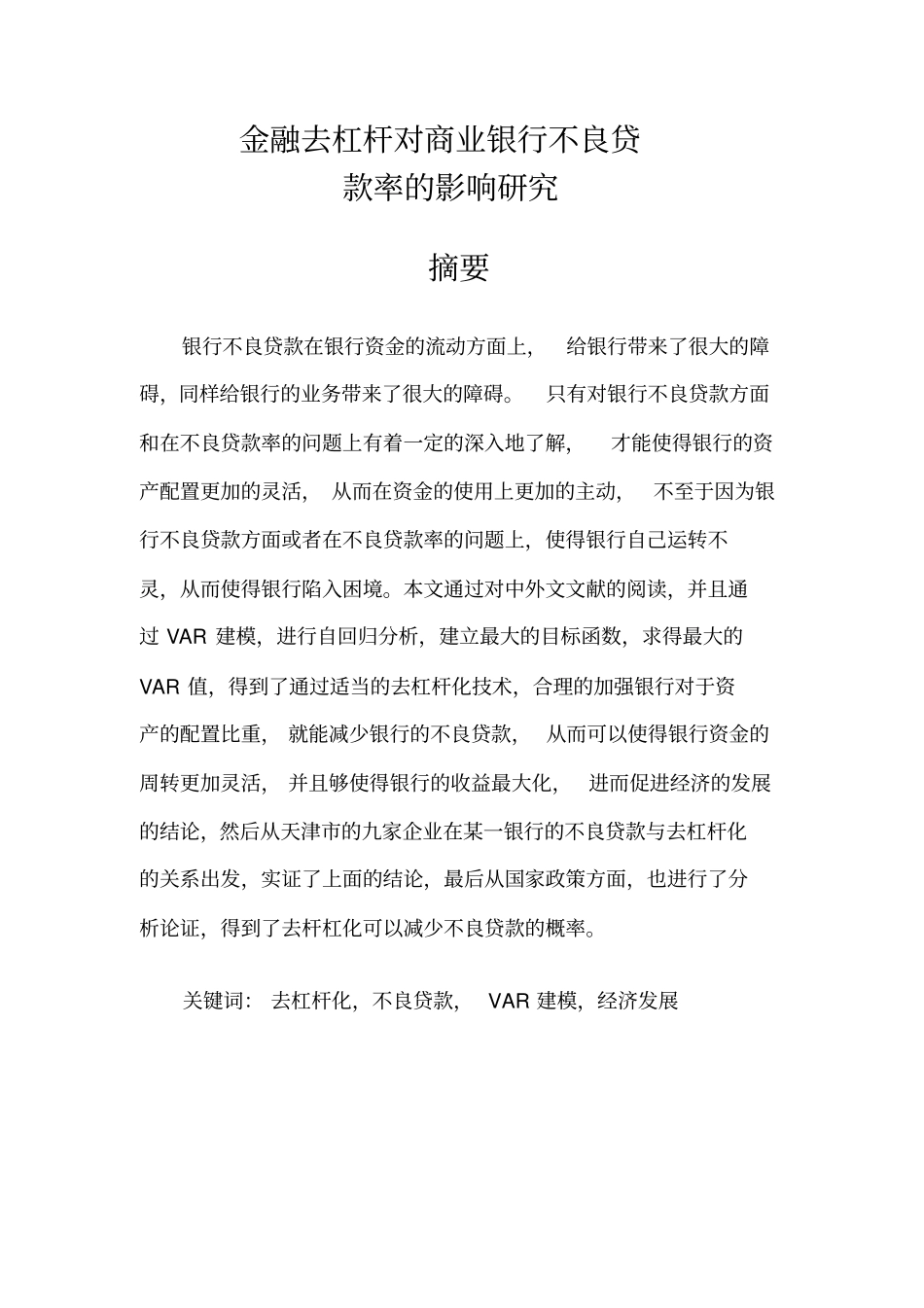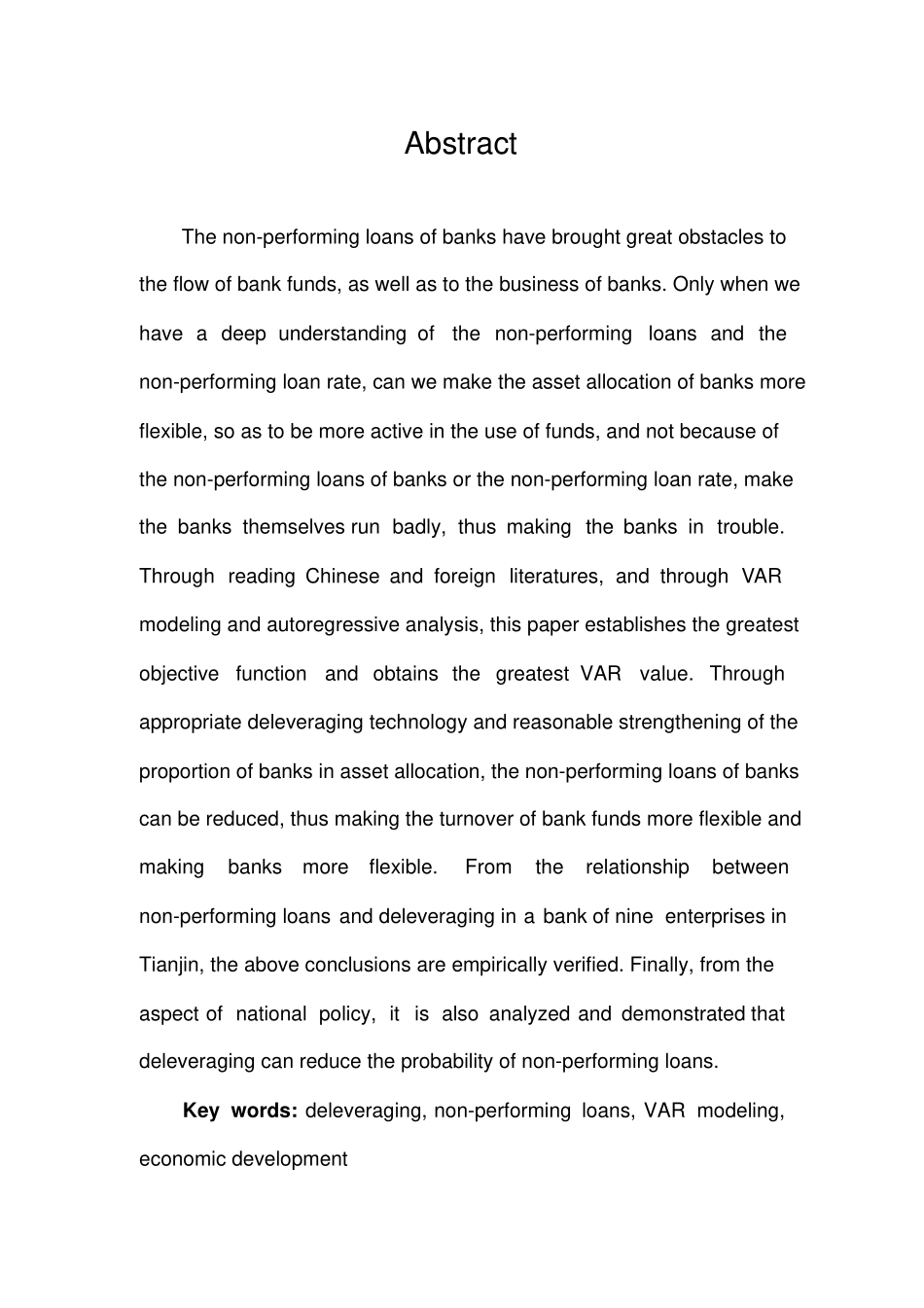金融去杠杆对商业银行不良贷款率的影响研究摘要银行不良贷款在银行资金的流动方面上,给银行带来了很大的障碍,同样给银行的业务带来了很大的障碍。只有对银行不良贷款方面和在不良贷款率的问题上有着一定的深入地了解,才能使得银行的资产配置更加的灵活, 从而在资金的使用上更加的主动,不至于因为银行不良贷款方面或者在不良贷款率的问题上,使得银行自己运转不灵,从而使得银行陷入困境。本文通过对中外文文献的阅读,并且通过 VAR 建模,进行自回归分析,建立最大的目标函数,求得最大的VAR 值,得到了通过适当的去杠杆化技术,合理的加强银行对于资产的配置比重, 就能减少银行的不良贷款, 从而可以使得银行资金的周转更加灵活, 并且够使得银行的收益最大化,进而促进经济的发展的结论,然后从天津市的九家企业在某一银行的不良贷款与去杠杆化的关系出发,实证了上面的结论,最后从国家政策方面,也进行了分析论证,得到了去杆杠化可以减少不良贷款的概率。关键词: 去杠杆化,不良贷款, VAR 建模,经济发展Abstract The non-performing loans of banks have brought great obstacles to the flow of bank funds, as well as to the business of banks. Only when we have a deep understanding of the non-performing loans and the non-performing loan rate, can we make the asset allocation of banks more flexible, so as to be more active in the use of funds, and not because of the non-performing loans of banks or the non-performing loan rate, make the banks themselves run badly, thus making the banks in trouble. Through reading Chinese and foreign literatures, and through VAR modeling and autoregressive analysis, this paper establishes the greatest objective function and obtains the greatest VAR value. Through appropriate deleveraging technology and reasonable strengthening of the proportion of banks in asset allocation, the non-performing loans of banks can be reduced, thus making the turnover of bank funds more flexible and making banks more flexible. From the relationship between non-...


